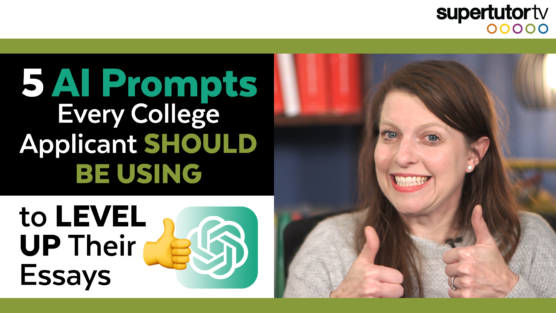Does early action even matter? We know this is something of a mystery for so many students, so in this blog, we’re going to talk about where early action matters and where it doesn’t.
Of the top 50 schools, only 14 of those schools have historically had early action programs that are non-binding. That’s what we’re going to focus on in this blog. Before we get too deep into that, however, we wanted to point out that we did cover restrictive early action and single choice early action in a recent video that was on early decision, so check that out for data points on those. But here we’re going to focus on the 14 schools that have historically had early action programs and talk about the schools that actually have data.
At the top of the list is MIT. And what we find, looking at the 2021-2022 dataset, is that the EA acceptance rate is 4.72%, the regular decision admit rate is 2.25%, and the EA to regular decision advantage is 2.1. We’re going to say that early action at MIT is going to give you a slight advantage at that campus. But, we’ll also say that on MIT’s admissions website, MIT’s admissions people state that there is no advantage to applying early and that they consider applications the same. Now within this idea that it is double the admissions rate when you apply early, MIT is such a competitive school that if people choose to apply early action, chances are that MIT is their first choice school, they have a shot at getting into MIT, and they’re not throwing away an early decision chance at a place like Cornell or NYU. So that being said, we might see a stronger candidate pool in the early action, which might be what’s explaining this 2x phenomenon. Our general rule of thumb is that any admissions rate that is ED over RD of double or more is when you’re getting into an actual real advantage of applying early.
Now onto UChicago, which notoriously does not fully release data. They hide everything, except their yield rate. Their yield rate is about 80%, which means that 80% of the students that get into their school end up coming. But here’s what’s weird about UChicago having such a high yield rate: Stanford and Harvard’s yields are around 80-82% depending on the year, which is about the same as UChicago. The Princeton Review did a survey a while back for the top 10 dream schools, and UChicago didn’t even crack the top 10. This tells the story that applying early decision or early action really matters at UChicago. Brooke’s heard rumors that they are bringing in around 80% of their class as people who applied early, so we also say apply early at UChicago, even if it’s just early action.
Tulane is a little bit harder to tease out because they’ve released some data but not all of it. So here’s what we know: under 3% of the students admitted to Tulane applied regular decision. This means that 97% of the students admitted to Tulane applied early action or early decision. So that means that the largest percentage of students admitted to Tulane came in early action. The admissions rate is likely higher with early decision; only 106 students got in regular decision compared to 2,249 getting early action. So it’s really important if you’re applying to Tulane that you’re at least applying early action, if not early decision.
UVA admits that only 29% of its total class came in through regular decision. The early action admit rate is 20.14% and the regular admit rate is 12.9%. That means that 71% of students at UVA either applied early action or early decision. So there’s probably some advantage there to applying early.
Going down the list, we have to get down to Georgia Tech to find data again, where 25.5% of students are getting in early action while only 16.42% of students are getting in regular decision. That’s a 1.6 advantage, so we recommend early action; however, the early action deadline for Georgia Tech has passed for this year. Early action 2, which is for out-of-state students, has a much lower acceptance rate of 12%, which is actually lower than the regular admit rate. But take this into consideration: Georgia Tech fills a lot of its class with in-state students, so we would still say that early action 2 is probably going to put you at an advantage. The overall early action versus regular decision is about 1.6, and both pools are going to have in-state students, so applying early definitely won’t hurt you at Georgia Tech.
Now we’re going to talk about schools where we don’t really know whether early action matters or not, but in most cases, we’d say that it’s not going to hurt you. The following schools don’t have any data released, so we don’t know 100% what the story is there. University of Michigan, UNC Chapel Hill, UT Austin, University of Wisconsin-Madison, University of Illinois Urbana-Champaign, Case Western University, and Ohio State University do not release data on early action admissions rates. But we would argue that, for the most part, at the majority of schools—given all of this data that we have—early action is an advantage. And even at schools where early action rates and regular decision rates are about the same, there’s not much of a disadvantage. Also, oftentimes, if you’re rejected early action, you’re not straight out rejected, but deferred to regular decision. So it’s unlikely that applying early action is going to hurt you, unless you have really low scores or if you’re applying to universities where it really doesn’t matter if you apply early, which we’ll get to soon. But at those schools, we would say go ahead and apply early action if you can, because it’s likely to confer an advantage, but we statistically can’t verify that.
Onto the two schools where it doesn’t matter if you apply early action, according to data. First on the list is Georgetown University, whose early action admissions rate of 9.98% is actually lower than its regular admission rate of 13.16%. This means there is a 20% disadvantage for applying early, so it doesn’t really matter if you apply early action to Georgetown or not. We wouldn’t say that applying early here would actually hurt you, because chances are that if you’re applying to Georgetown, you don’t think you’re going to get into Harvard, Stanford, Princeton, or Yale, as Georgetown’s early action is somewhat restrictive. You cannot apply early action to Georgetown and early decision somewhere else. So if you’re EDing anywhere, you’re not going to EA to Georgetown. Thus, we would argue that Georgetown’s pool probably gets a little bit stronger in the regular decision round, and that’s what would account for this particular anomaly. But in any case, we think that, statistically, it’s safe to say that if you really want to go to Georgetown and you feel like you’re a really strong candidate, and you have a shot at some other school that might have more prestige or more difficult admissions protocols, you can go ahead and try to see what you can do.
The second school on our list is the University of Georgia. Its early admissions rate and regular admissions rate are about the same: 41.4% and 42.5%, respectively. There’s not a lot of difference, so it doesn’t seem like it’s conferring that much of an advantage to apply early. That being said, there are advantages, even at these two schools, to applying early action. The number one advantage is that you get to find out early if you’re accepted or not, and if you know these schools are number one on your list, there’s nothing stopping you from applying early action. But we would say that for these two particular schools, it doesn’t matter that much whether you apply early or not, at least compared to some of the other schools.
From all of that data, what do we make of this? Our first conclusion is that we’re pretty sure that applying early action is not going to hurt you, and from the data that we have, it does appear that it could help you. Now, there is quite a bit of a story to unpack in terms of what these statistics mean; but at super competitive universities, they’re going to be looking for diversity when they’re filling their classes. If you’re not that diverse, it’s going to be harder to get in regular decision.
We hope this was helpful, and if you want to learn more about early decision, be sure to check out our blog or video on that!




